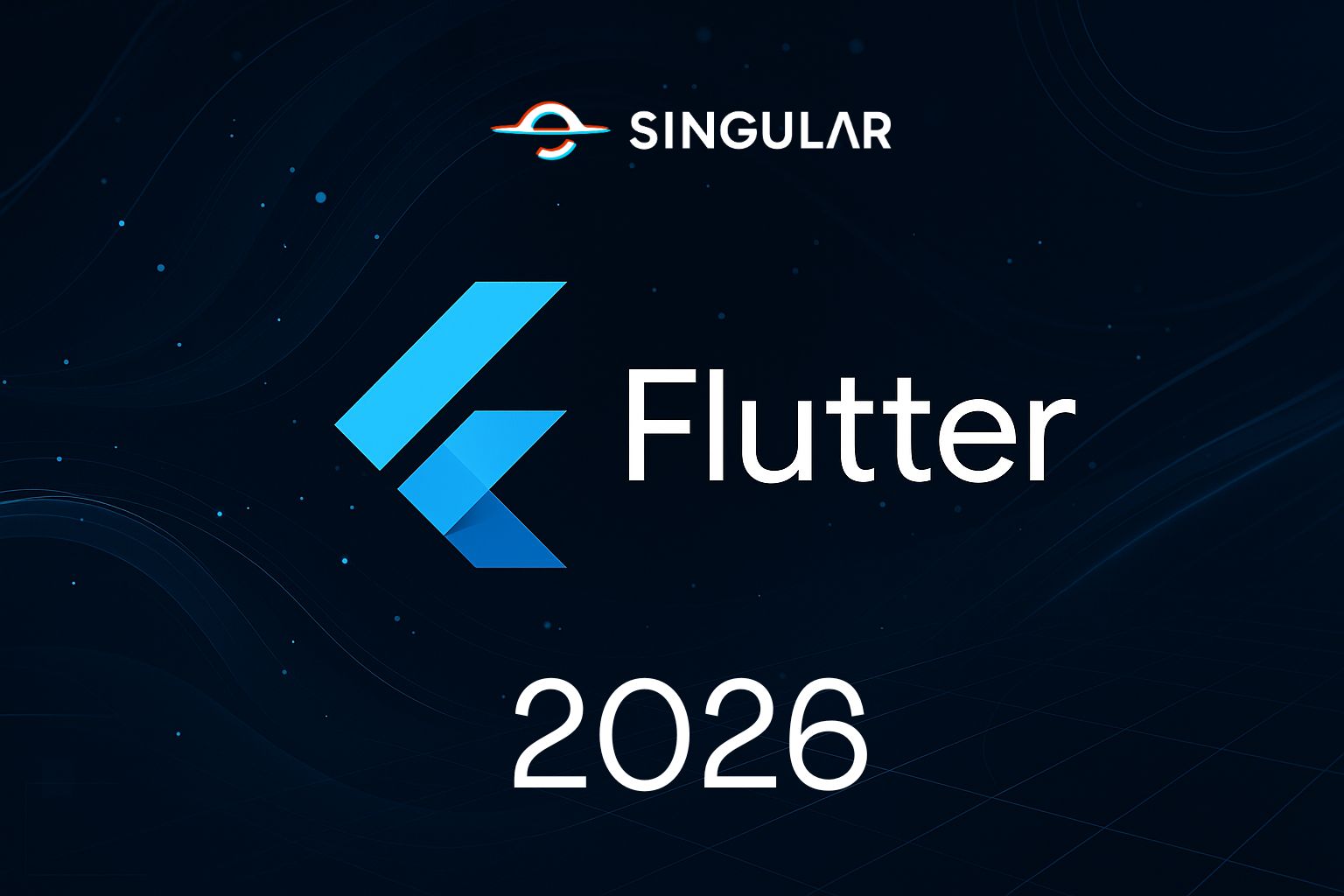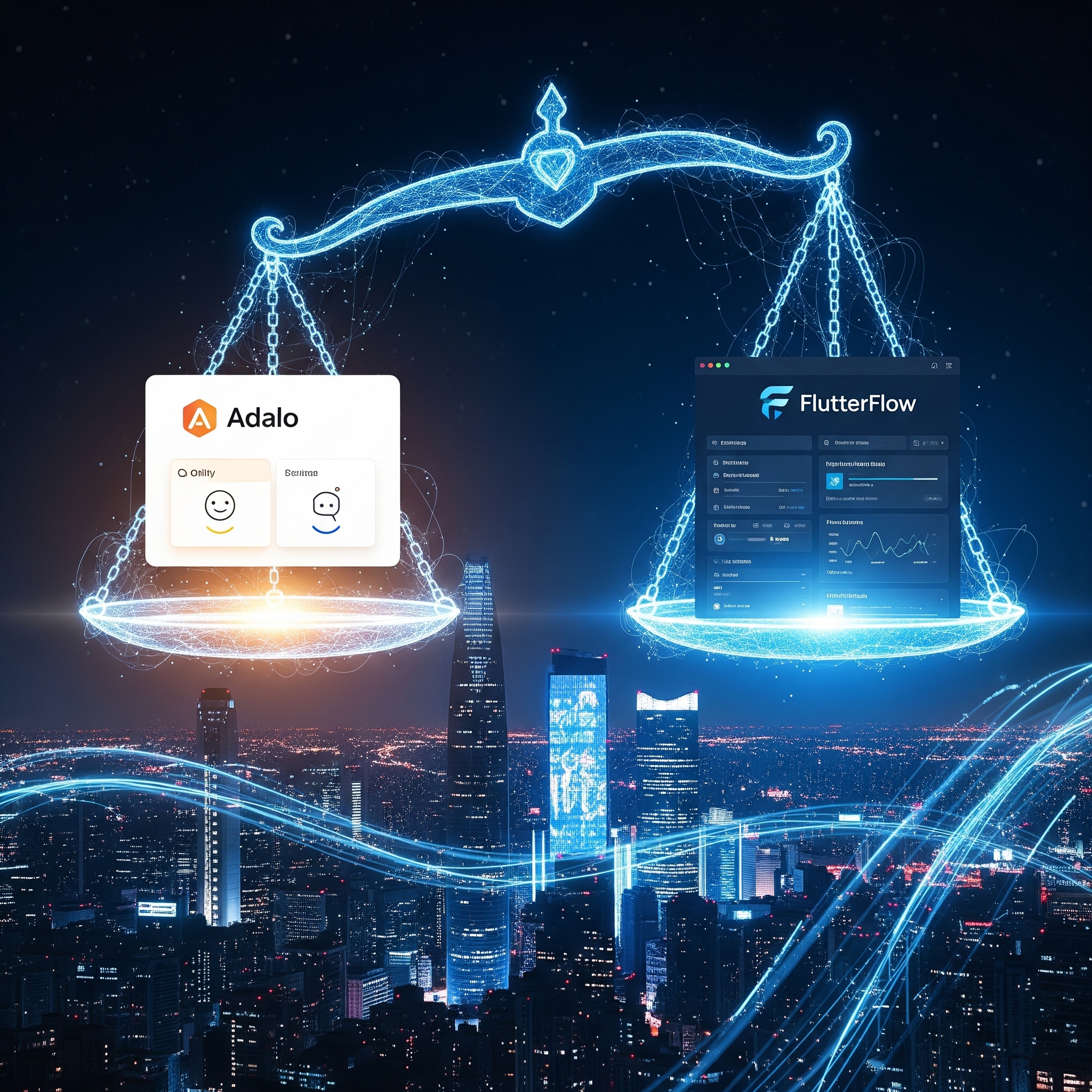Flutter in the AI Era: How SMBs Are Building Smarter Mobile Apps in 2026

In an era where speed, agility, and intelligence define success, Flutter is becoming more than just a cross‑platform UI framework—it’s the frontend canvas for AI-powered apps. For U.S. SMBs, building with Flutter in combination with smart automation workflows is enabling a new class of mobile apps—apps that think, respond, and adapt. This is especially true for founders who want No-Code / Low-Code paths and Startup AI USA–style architectures. In places like Miami, San Diego, and Austin, teams are already using Flutter + AI workflows to compress development cycles and deliver value faster.
In this guide, we’ll explore how SMBs can build smarter mobile apps with Flutter in 2026 using AI automation, how to structure your workflow stack, what to watch out for, and how to partner with implementation experts to get it done right.

Why Flutter + AI Makes Sense for SMBs in 2026
Flutter’s Momentum & Cross‑Platform Strength
Flutter continues to gain traction. It now powers a significant share of cross-platform apps globally, with strong adoption across web, mobile, and desktop.
Because Flutter renders UI itself (not relying solely on native components), it offers consistent design, performance, and flexibility across devices. This foundation makes it a compelling base for AI capabilities.
AI Is the Differentiator, Not Just the UI
A UI framework is only part of the story. The competitive edge lies in embedding intelligence—automated decisions, predictions, context-aware responses—into the app logic. By combining Flutter with AI workflows, SMBs can turn reactive apps into anticipatory ones.
Recent research from Cornell University analyzing user feedback across AI‑powered mobile apps highlights what users value (productivity, reliability) and what they critique (errors, inconsistency). By building proper AI workflows and guardrails, you can optimize for what users truly care about.
Anatomy of a Flutter + AI Workflow for SMB Apps
Here’s a typical stack and flow for a modern mobile app built by an SMB in 2026:
- Data Integration Layer
Connectors to Airtable, Google Sheets, or backend databases to provide structured data inputs. - AI / Intelligence Layer
Callouts to OpenAI, TensorFlow Lite, or on-device models to generate predictions, natural language outputs, or classification. - Workflow / Orchestration Layer
Tools like n8n or backend logic services that sequence events: “if X happens, then do Y,” trigger remote actions, send notifications, etc. - Flutter Frontend
The UI: forms, dashboards, interactive views, and reactive updates pushing results to the user. - Monitoring & Feedback Loop
Analytic logging, error monitoring, drift detection, user feedback, and iterative tuning.
This structure allows non-technical founders to define logic visually and focus their developers on custom modules only where needed.
Real Use Cases & SMB Examples

Example: Field Service App in San Diego
A small service business built a Flutter mobile app for technicians in the field. The backend AI workflow handled task assignment, predictive maintenance, and real-time feedback.
- Task match accuracy improved by 60%
- Technician idle time reduced by 40%
- Customer follow-up messages auto-generated via AI, saving ~5 hours per week
Example: Retail Loyalty App in Miami
A boutique retailer used Flutter + AI workflows to power a loyalty and recommendation engine.
- In‑app suggestions increased repeat sales by 25%
- Push notifications personalized to user behavior
- Backend logic handled anomaly detection—flagging suspicious activity immediately
These examples reflect the kind of transformation that implementation partners (like the ones you might hire) make possible—making complexity feel seamless.
Choosing No-Code vs Low-Code in Your Flutter Workflow
When No-Code Works Best
- You need speed to market
- Logic is straightforward (if/then, simple data transforms)
- Data volumes are moderate
- You want non-technical team members to own parts of workflow logic
When Low-Code Becomes Necessary
- Complex integrations or custom domain logic
- Heavy data transformations or performance critical paths
- You expect to scale in usage, concurrency, or customization
In many cases, SMBs begin with no-code workflows and then progressively introduce low-code extensions as needed.
Implementation Steps for SMB Flutter + AI Apps
- Define the priority use case (e.g. lead scoring, push notification logic, content personalization)
- Model data flows and triggers visually
- Prototype AI logic: classification, generation, rule-based decisioning
- Build minimal Flutter UI connecting to AI endpoints
- Test in real conditions and monitor errors, latency, feedback
- Iterate & expand modules: add new AI agents or workflows over time
If you want help mapping your stack or selecting the right tools, you can always schedule a free strategy call with an expert partner to co-design your architecture.
Key Risks & Mitigations

- Drift in AI outputs — continuously monitor and refine input data, thresholds
- Performance and latency issues — cache smartly, move tasks to backend where needed
- Security & governance — define access roles, audit logs, data masking
- Vendor lock-in — choose modular architecture, keep exportable logic
- User trust — introduce human-in-loop gates for sensitive tasks
FAQs
1. Do I need Flutter experience to build AI apps?
Not entirely. With proper workflows and partners, non-technical founders can lead AI + Flutter app development using visual tools and modular architecture.
2. Can AI features run on-device with Flutter?
Yes. Frameworks like TensorFlow Lite or on-device inference can embed AI locally. Hybrid models (cloud + local) are often used for balance.
3. What kinds of AI apps work best?
Use cases like content generation, classification, recommendation, notifications, contextual UI adjustments, and workflow assistance excel.
4. How fast can the first version launch?
Depending on complexity: many SMBs launch useful MVPs within 2–4 weeks.
5. What ROI can SMBs expect?
Expect operational savings, improved engagement, conversion lift—2× to 4× return is realistic when workflows are effective.
6. How to choose a reliable partner?
Look for experience with Flutter, AI integration, and modular workflow architecture. They should guide design, governance, and monitoring.
In 2026, mobile apps that don’t think will be left behind. For SMBs, combining Flutter’s cross-platform power with AI-driven workflows is the pathway to efficient, scalable, intelligent products. You don’t need a massive dev team—just the right architecture and partner to guide you.
Ready to build smarter mobile apps? Schedule a strategy call now and let’s map your Flutter + AI roadmap.
Heading
Dolor enim eu tortor urna sed duis nulla. Aliquam vestibulum, nulla odio nisl vitae. In aliquet pellentesque aenean hac vestibulum turpis mi bibendum diam. Tempor integer aliquam in vitae malesuada fringilla.
Mi tincidunt elit, id quisque ligula ac diam, amet. Vel etiam suspendisse morbi eleifend faucibus eget vestibulum felis. Dictum quis montes, sit sit. Tellus aliquam enim urna, etiam. Mauris posuere vulputate arcu amet, vitae nisi, tellus tincidunt. At feugiat sapien varius id.
Heading 3
Eget quis mi enim, leo lacinia pharetra, semper. Eget in volutpat mollis at volutpat lectus velit, sed auctor. Porttitor fames arcu quis fusce augue enim. Quis at habitant diam at. Suscipit tristique risus, at donec. In turpis vel et quam imperdiet. Ipsum molestie aliquet sodales id est ac volutpat.
Tristique odio senectus nam posuere ornare leo metus, ultricies. Blandit duis ultricies vulputate morbi feugiat cras placerat elit. Aliquam tellus lorem sed ac. Montes, sed mattis pellentesque suscipit accumsan. Cursus viverra aenean magna risus elementum faucibus molestie pellentesque. Arcu ultricies sed mauris vestibulum.
Heading 4
Morbi sed imperdiet in ipsum, adipiscing elit dui lectus. Tellus id scelerisque est ultricies ultricies. Duis est sit sed leo nisl, blandit elit sagittis. Quisque tristique consequat quam sed. Nisl at scelerisque amet nulla purus habitasse.

Heading 5
Morbi sed imperdiet in ipsum, adipiscing elit dui lectus. Tellus id scelerisque est ultricies ultricies. Duis est sit sed leo nisl, blandit elit sagittis. Quisque tristique consequat quam sed. Nisl at scelerisque amet nulla purus habitasse.
"Ipsum sit mattis nulla quam nulla. Gravida id gravida ac enim mauris id. Non pellentesque congue eget consectetur turpis. Sapien, dictum molestie sem tempor. Diam elit, orci, tincidunt aenean tempus."
Heading 6
Nunc sed faucibus bibendum feugiat sed interdum. Ipsum egestas condimentum mi massa. In tincidunt pharetra consectetur sed duis facilisis metus. Etiam egestas in nec sed et. Quis lobortis at sit dictum eget nibh tortor commodo cursus.
What is Singular Innovation
Lorem ipsum dolor sit amet, consectetur adipiscing elit. Suspendisse varius enim in eros elementum tristique.






